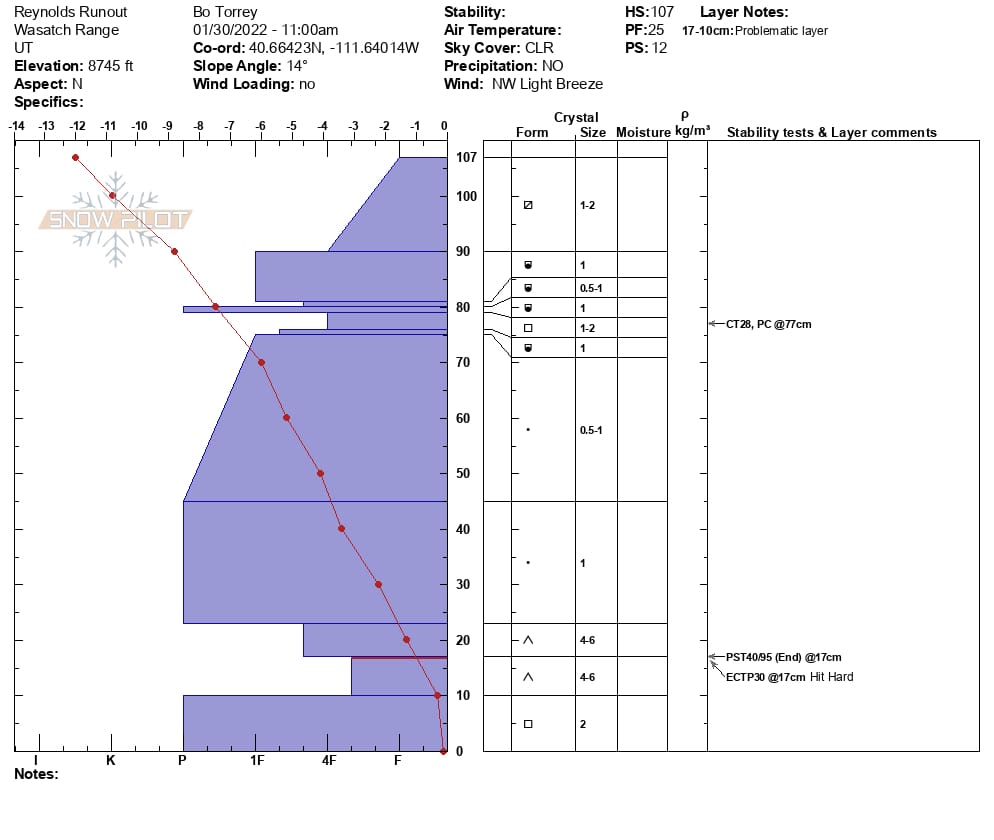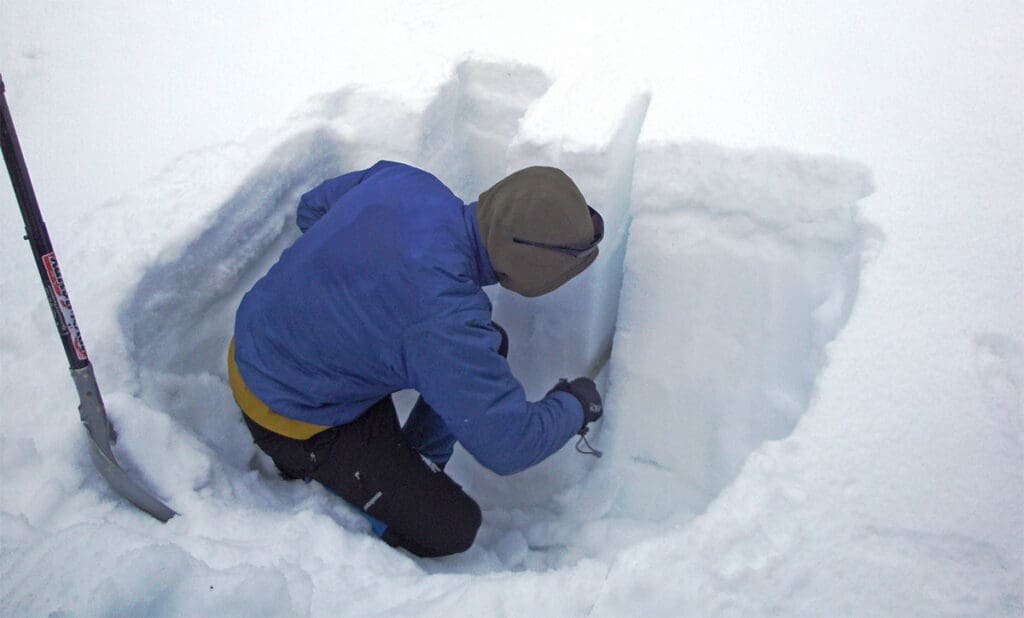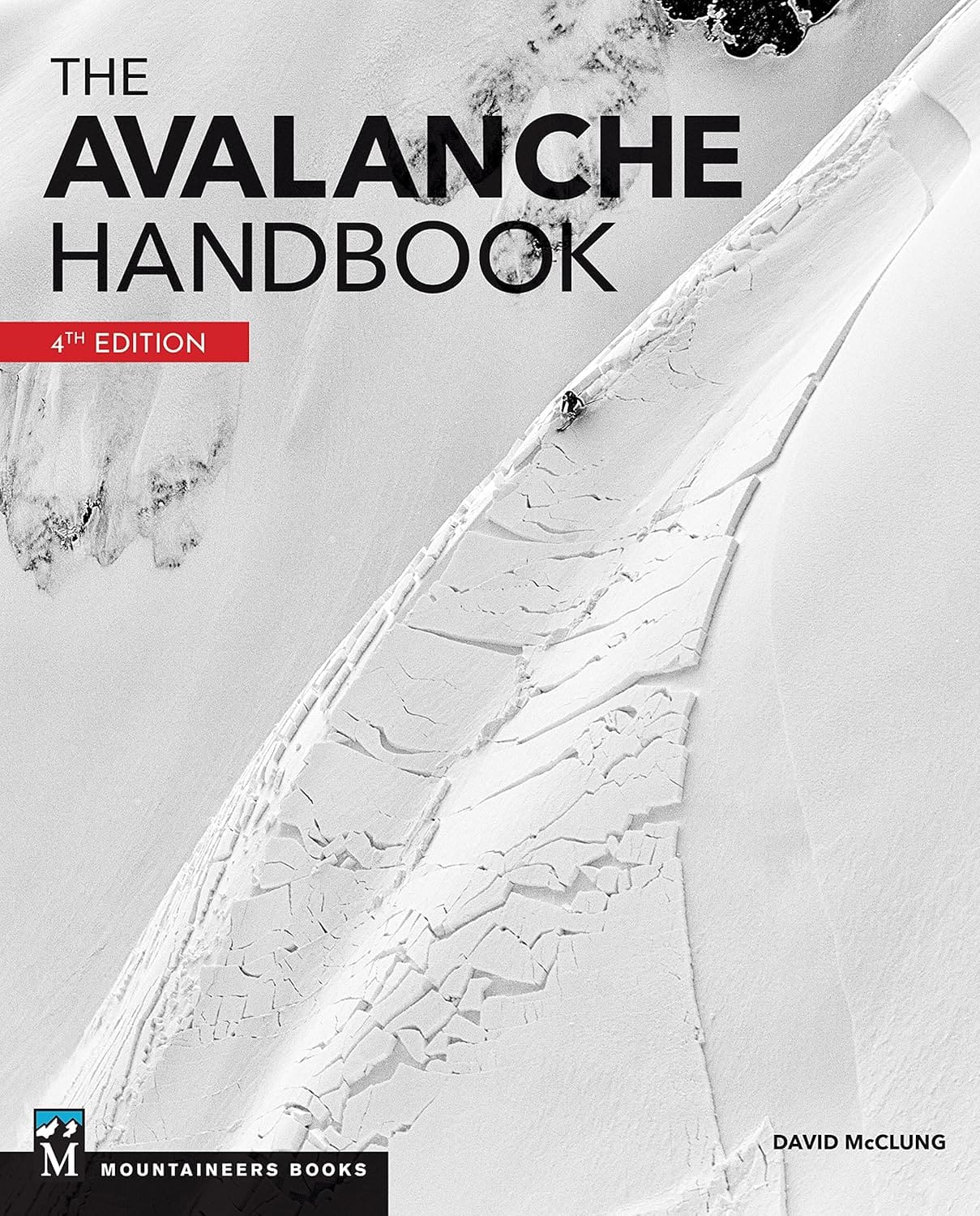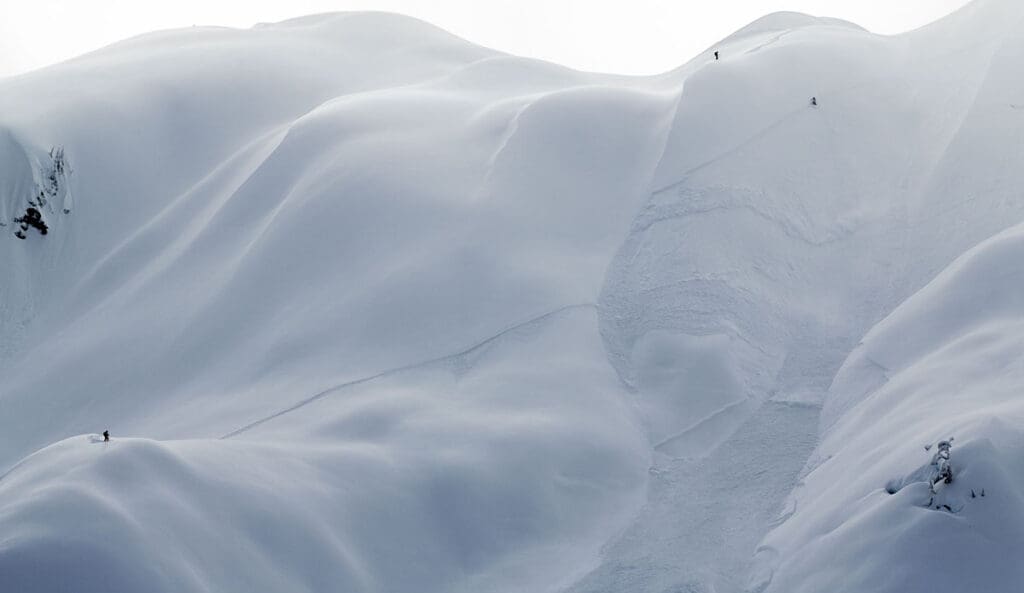Why Temperature Matters
Temperature is one of the most easily observable variables in the backcountry, but also one of the most overlooked when it comes to avalanche risk. Unlike complex snowpack tests or hard-to-read terrain features, temperature is something anyone can track with the right mindset and tools. For skiers and snowboarders who want to understand avalanche safety, getting to know how temperature affects the structure of the snowpack is a crucial skill.
Shifts in temperature (especially rapid warming) can quickly change the stability of the snowpack. Being aware of these changes can help you make smarter decisions, spot red flags, and avoid dangerous terrain.
Key Concepts To Understand
1. Spring is Prime Time for Temperature Instability
While temperature matters year-round, it becomes especially critical in the spring, when longer days and stronger sun create wide daily fluctuations. This warming can lead to melt-freeze cycles, wet loose avalanches, and cornice failures.
2. It’s Not Just the Temperature Reading, It’s The Change
A single reading won’t tell you much. But comparing temperatures across time and space gives you valuable insight. Watch for differences between:
- Morning and afternoon readings
- Shady vs. sunny aspects
- North-facing vs. south-facing slopes (AKA Aspect)
- Different layers within a snow pit
If you notice a change greater than 2°C over a short period (especially when warming), it can be a sign of increased instability, particularly if the snowpack is already fragile.

3. Temperature as a Confirmation Tool
Temperature changes don’t cause avalanches on their own, but they often tip the balance when other conditions are already precarious. Use it to confirm suspicions when you’ve already observed:
- Steep slope angles (30–45°)
- Recent snow or wind loading
- Cracking or collapsing
If everything else checks out but the temperature’s spiking, pull back or avoid committing terrain. The mountain will still be there tomorrow. And more importantly, so will you.
Field Tips For Understanding Temperature
✅ Use a thermometer or snow thermometer to take readings from snow layers.
✅ Note daily high/low forecasts before your tour.
✅ Observe surface snow texture changes—crust forming, snow getting sticky, or slushy snow in the afternoon are signs of temperature impact.
✅ Plan travel around aspect and timing—ride sunny slopes early and shady slopes late (if stable).

Key Takeaways
- 1. Rapid warming increases avalanche risk, especially in spring.
- 2. Pay attention to temperature differences, not just static numbers.
- 3. Combine temperature observations with other red flags.
- 4. Trust your gut: if it feels too warm for safety, it probably is.
Links To Continue Your Avalanche Education

Pick up your own snow thermometer and test it out in the field

Buy your copy of the GOAT of snow science manuals: The Avalanche Handbook
Read More Avalanche Awareness Articles
This article is part of our ongoing Avalanche Awareness 101 series, designed to help riders build the instincts and knowledge needed to stay safe in the mountains.
Next up: Avalanche Awareness 101 – Wind
We’ll explore how wind contributes to avalanche danger through several variables.
Ready to learn more? Sign up for our newsletter to get updates, field tips, and clinic announcements straight to your inbox.

